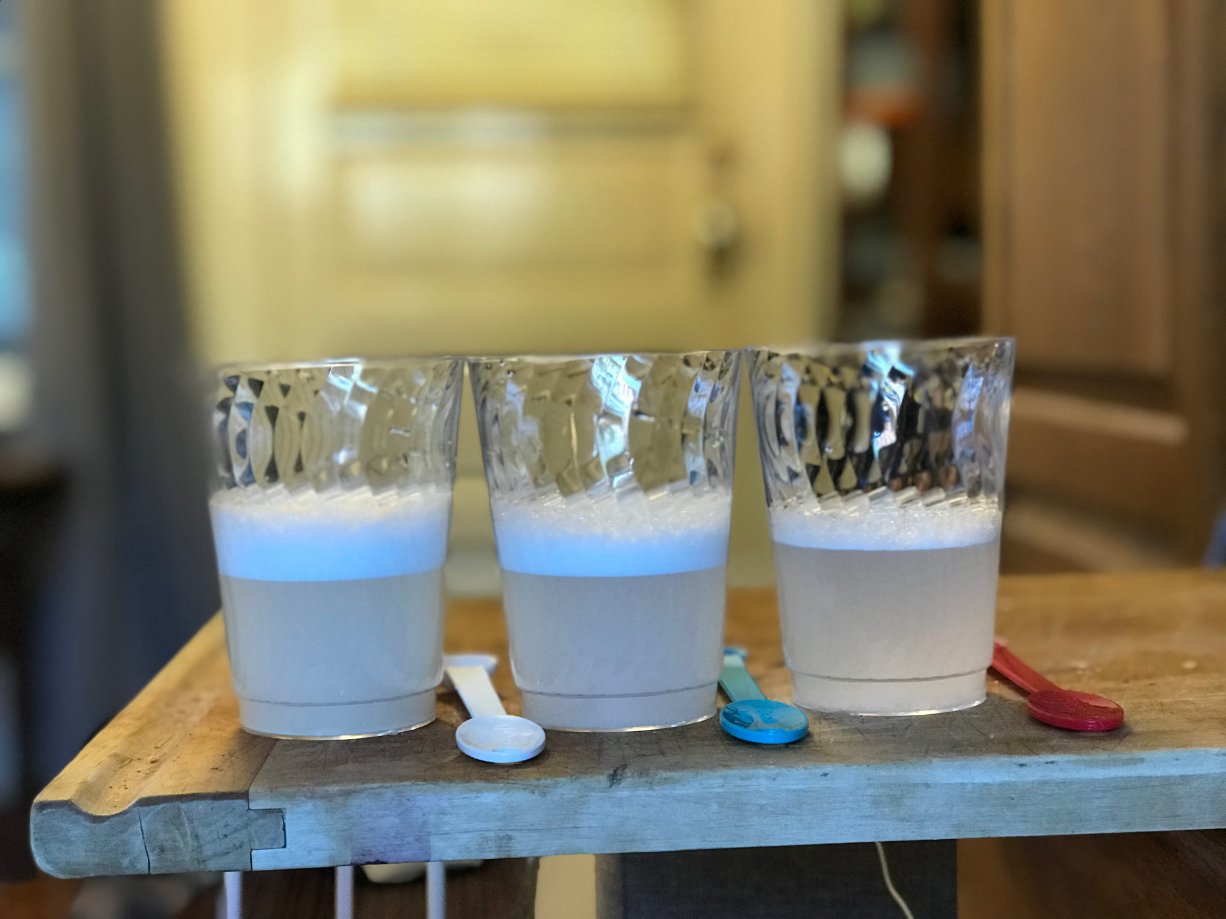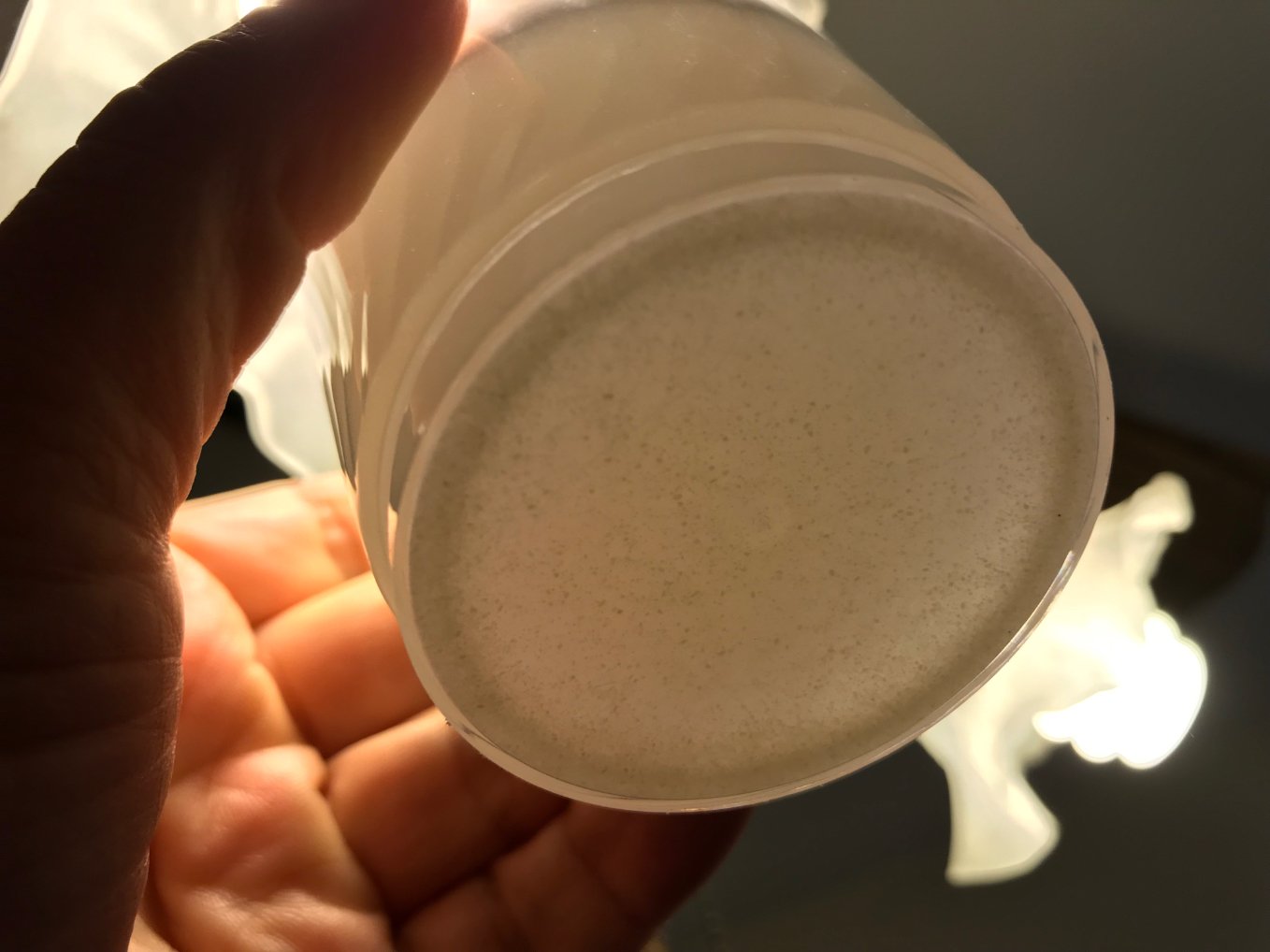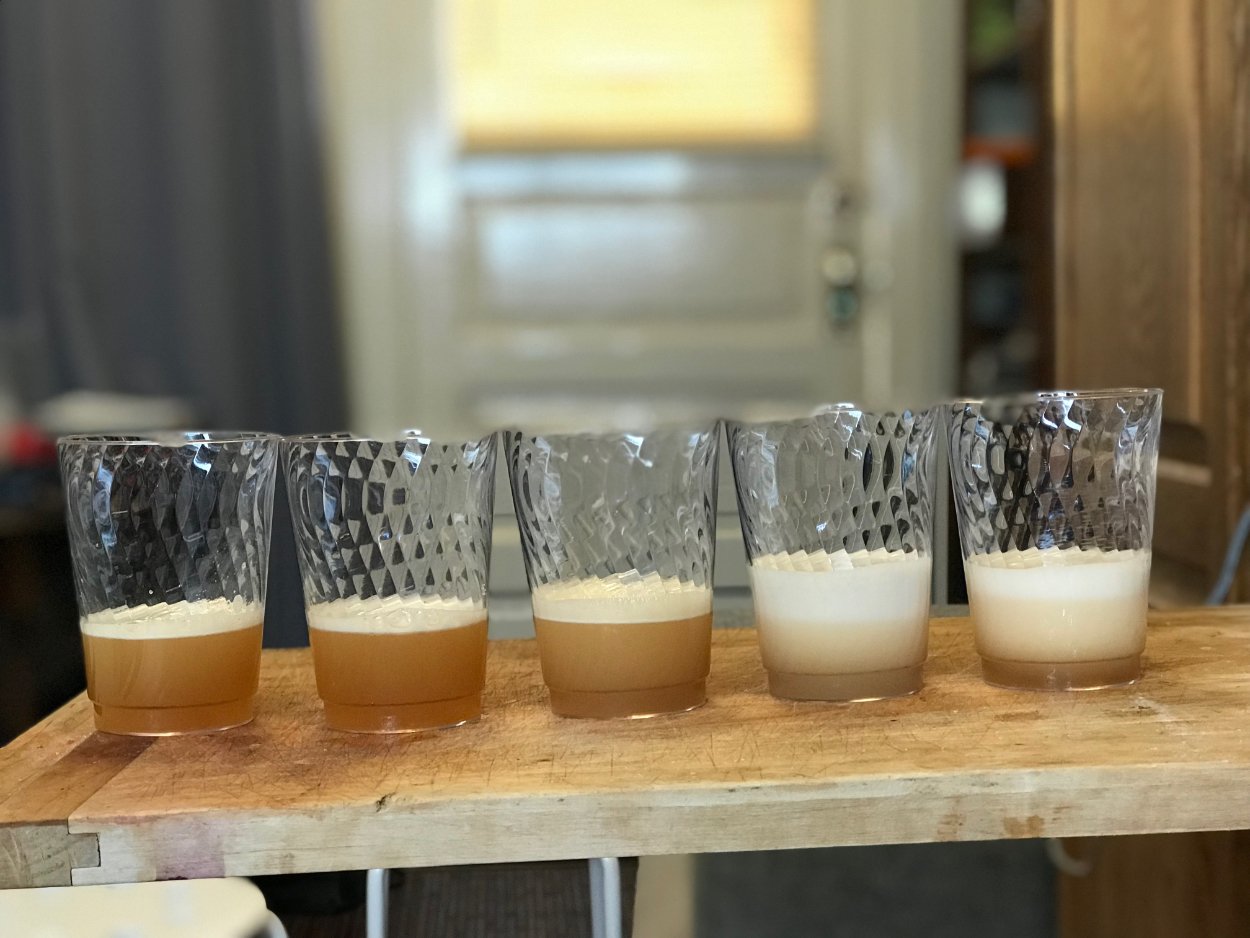In previous experiments with aquafaba to replace egg white for froth in cocktails:
- Dried Chickpea Prep to Make Aquafaba for Cocktail Froth
- Aquafaba Experiments Round 1
- Aquafaba Experiments Round 2
I tried chickpea/garbanzo bean water from canned beans, from uncooked and cooked beans, and from chickpea flour both cooked and uncooked.
I found in those experiments that canned water was best for the amount and quality of froth produced, followed by uncooked flour water, followed closely by boiled bean water.
Though I didn't love the taste of unboiled garbanzo bean flour water, I decided to try garbanzo bean flour as a solid – by adding the flour directly to the drink before shaking.
I tried 1/4 teaspoon chickpea flour, 1/8 tsp, amd 1/16 tsp.
I found that 1/16th wasn't quite enough, but 1/8 teaspoon seemed to work just fine. (note this experiment was with vodka and water plus the flour)
One issue with using the flour (rather than water with flour in it that's left to settle as in previous experiments) is that it settles out relatively quickly to the bottom of the glass. That's why I wanted to minimize the amount in the first place.
A second issue is the flavor: though not incredibly powerful, there are notes of raw flour and a slight tannic or metallic flavor.
On the plus side, if only occasionally using an egg white replacement in cocktails, chickpea flour is shelf stable compared with liquid. It might be worth testing to see if the flavor of the uncooked flour and the settling is tolerable.
However if you're hoping to use aquafaba more often or switch to an egg white alternative permanently, I would think you'd want something that doesn't settle in the glass and has less of a flavor impact. For that, I would return to the posts with the technique by Hannes Schmitt or Aquafaba Experiments Round 1 to see a few options.


